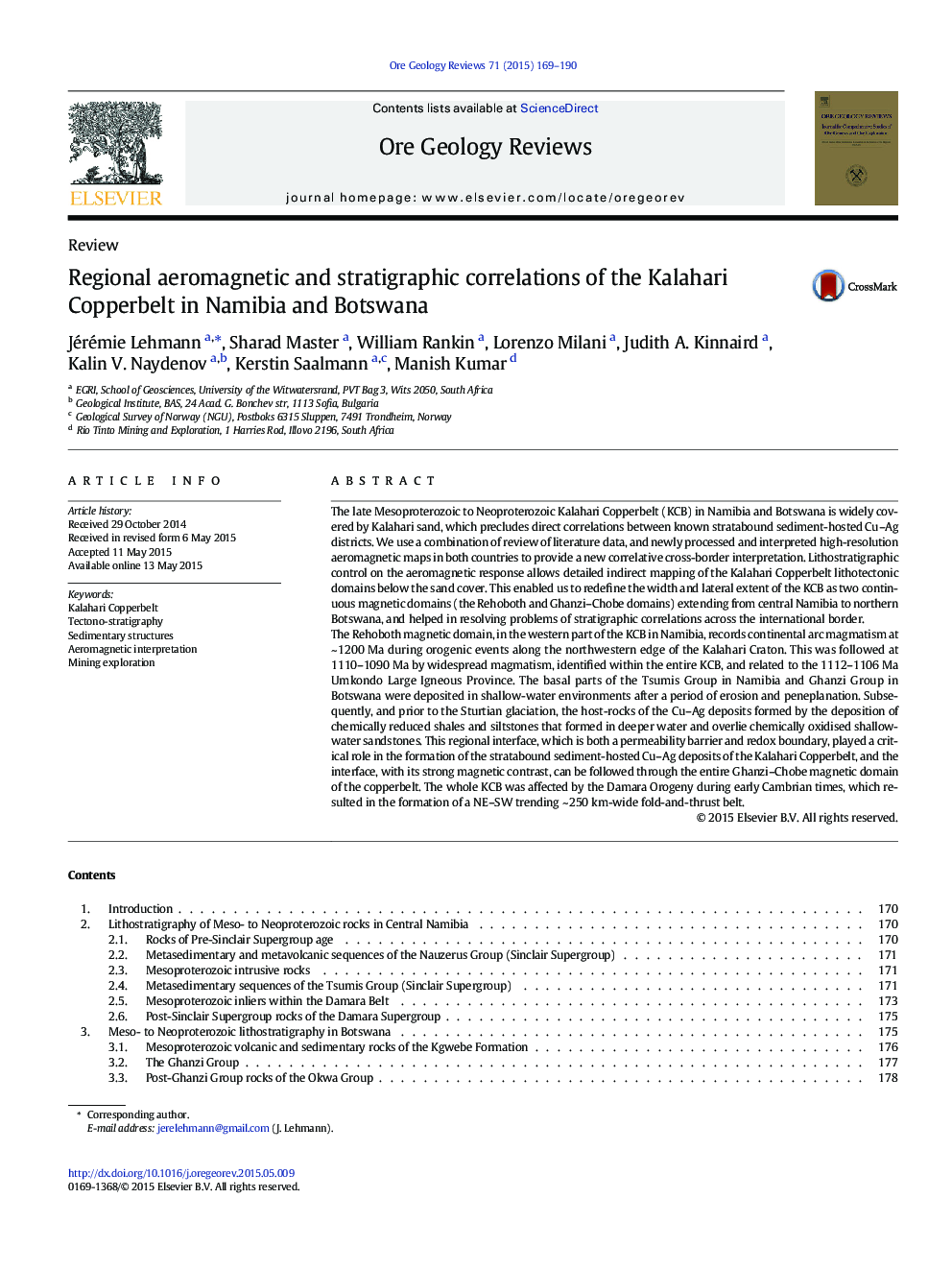| کد مقاله | کد نشریه | سال انتشار | مقاله انگلیسی | نسخه تمام متن |
|---|---|---|---|---|
| 4697030 | 1637233 | 2015 | 22 صفحه PDF | دانلود رایگان |
• Sub-surface mapping of the Kalahari Copperbelt (KCB) rocks using aeromagnetic data.
• Literature review of KCB geology and depositional palaeo-environmental settings.
• Resolving problems of stratigraphic correlation across the Namibia Botswana border.
• New correlative cross-border interpretation of the extent and evolution of the KCB.
• Mineralization at the interface between reduced and oxidised metasedimentary rocks.
The late Mesoproterozoic to Neoproterozoic Kalahari Copperbelt (KCB) in Namibia and Botswana is widely covered by Kalahari sand, which precludes direct correlations between known stratabound sediment-hosted Cu–Ag districts. We use a combination of review of literature data, and newly processed and interpreted high-resolution aeromagnetic maps in both countries to provide a new correlative cross-border interpretation. Lithostratigraphic control on the aeromagnetic response allows detailed indirect mapping of the Kalahari Copperbelt lithotectonic domains below the sand cover. This enabled us to redefine the width and lateral extent of the KCB as two continuous magnetic domains (the Rehoboth and Ghanzi–Chobe domains) extending from central Namibia to northern Botswana, and helped in resolving problems of stratigraphic correlations across the international border.The Rehoboth magnetic domain, in the western part of the KCB in Namibia, records continental arc magmatism at ~ 1200 Ma during orogenic events along the northwestern edge of the Kalahari Craton. This was followed at 1110–1090 Ma by widespread magmatism, identified within the entire KCB, and related to the 1112–1106 Ma Umkondo Large Igneous Province. The basal parts of the Tsumis Group in Namibia and Ghanzi Group in Botswana were deposited in shallow-water environments after a period of erosion and peneplanation. Subsequently, and prior to the Sturtian glaciation, the host-rocks of the Cu–Ag deposits formed by the deposition of chemically reduced shales and siltstones that formed in deeper water and overlie chemically oxidised shallow-water sandstones. This regional interface, which is both a permeability barrier and redox boundary, played a critical role in the formation of the stratabound sediment-hosted Cu–Ag deposits of the Kalahari Copperbelt, and the interface, with its strong magnetic contrast, can be followed through the entire Ghanzi–Chobe magnetic domain of the copperbelt. The whole KCB was affected by the Damara Orogeny during early Cambrian times, which resulted in the formation of a NE–SW trending ~ 250 km-wide fold-and-thrust belt.
Journal: Ore Geology Reviews - Volume 71, December 2015, Pages 169–190
